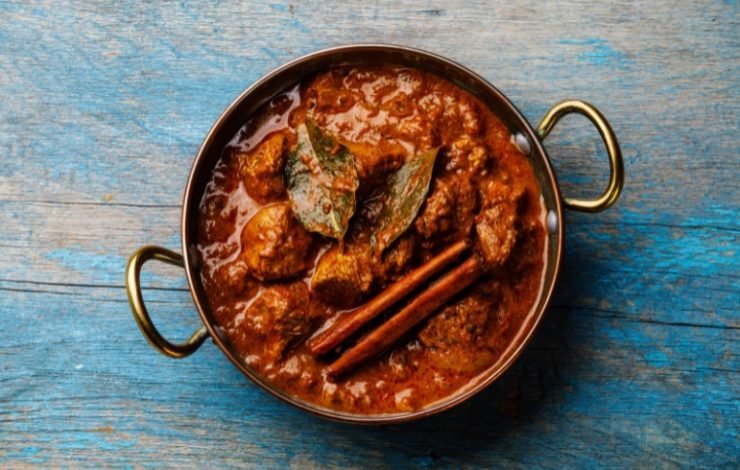There are a lot of ways that food can end up too spicy.
Have you ever accidentally added a tablespoon of cayenne instead of a teaspoon? Maybe you forgot to remove the seeds of a hot pepper, or picked up a Thai bird chili instead of a jalapeno?
It happens to the best of us.
And while I would usually be tempted to just suffer through, I don’t know that my toddler would be on board.
Luckily, while there are a number of ways your recipe could have gotten too spicy (no finger-pointing around here), there are just as many ways to fix it.
So wash your hands and don’t rub your eyes, here are 6 ways to make food less spicy.
In This Article
6 Easy Ways To Make Food Less Spicy
1. Dilute The Dish
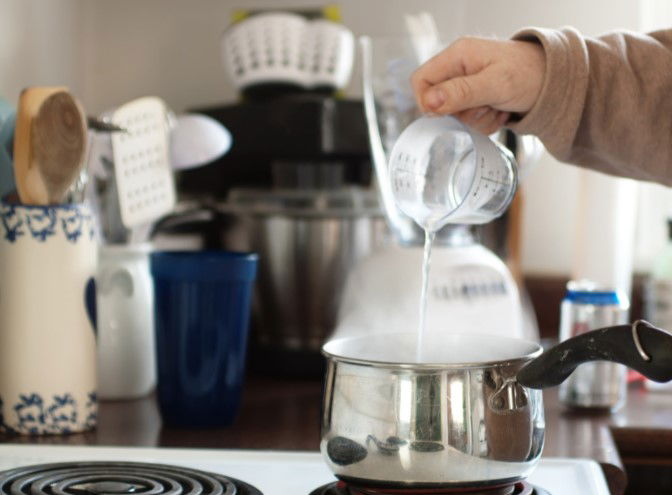
Adding more ingredients to your overly spicy dish can do wonders to dilute the heat. This is a great option because you don’t have to alter the flavor of the dish by adding ingredients that may not belong.
To dilute a spicy dish, you don’t necessarily have to add more of everything, which can lead to a lot of extra work. For soups and stews, it could just mean adding more liquid. And for anything else, just add more of what you have extra of. That could be more veggies, starch, or protein.
Remember that while you’re diluting the heat, you’re also diluting the other seasonings as well. So, you may need to add more salt and other seasonings to keep everything tasting as it should
2. Add Fat Or Dairy
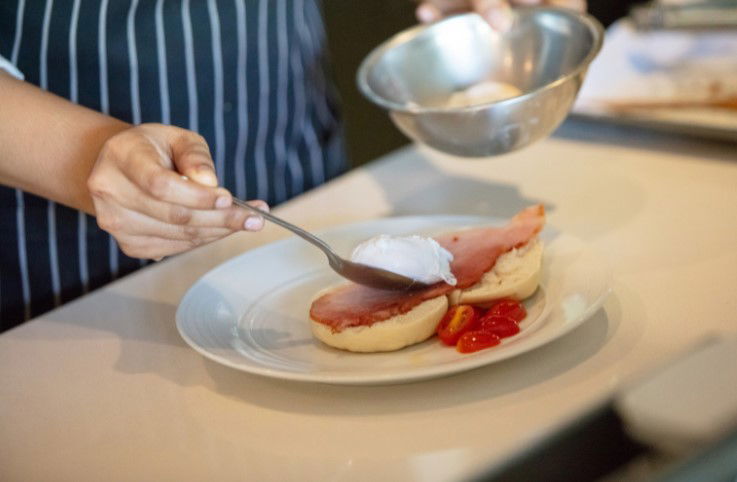
Ingredients with high-fat content, and dairy, in particular, work really well to tone down excessive heat. There’s a reason people will tell you to chug a glass of milk when you eat something that lights your mouth on fire.
Adding fat or dairy to a dish mellows everything out and there are a couple of different ways to go about using this method.
You can stir things like butter, cream, or yogurt directly into the dish. But, this can sometimes result in an unpleasant color, or a broken, curdled mess. The other option is to make a creamy and cooling sauce that can be added on top or to the side of a spicy dish.
You can make an herbed yogurt or simply dollop sour cream on top. But opting for a topping like this is a good way to let whoever is eating decide for themselves how much heat they can handle.
3. Add Sweetness
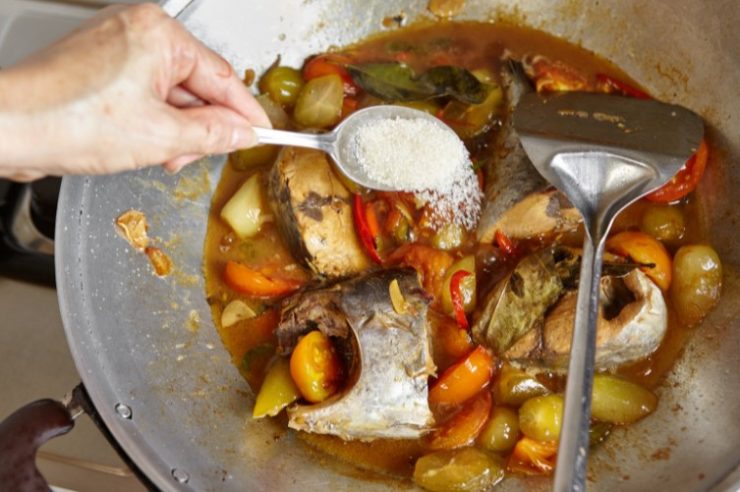
When talking about different flavors, it’s easy to think of sweet as the opposite of spicy. And adding a little sweetness can do wonders to balance out an overly spicy recipe.
Adding sweeteners to a savory dish should be done judiciously. We’re just trying to add some counterbalancing flavors, but you don’t want the recipe to actually taste sweet. A little can go a long way here, so start by adding very small amounts, then taste before adding any more.
If you’re trying to tone down an American dish like chili or a spicy bbq sauce, brown sugar or honey work particularly well. But you can also branch out and use things like fruit juices, jelly, ketchup, or maple syrup.
4. Add Acid

Acidic ingredients work similarly to sweet ones by balancing out spiciness. Anyone who eats Thai food knows that they are the masters of this technique. They commonly use a combination of spicy chilis, sweet palm sugar, and sour lime juice to create balanced dishes with intense amounts of flavor.
Not only does adding acid counteract excess heat, but it will also brighten up the dish at the same time. Win-win.
Acid is most effective when added at the end or after the cooking is all done. If it sits or is cooked for too long, you’ll lose most of the acidity. So, add a few drops of vinegar or squeeze some lemon or lime wedges off heat for the biggest impact.
5. Serve It With A Starch
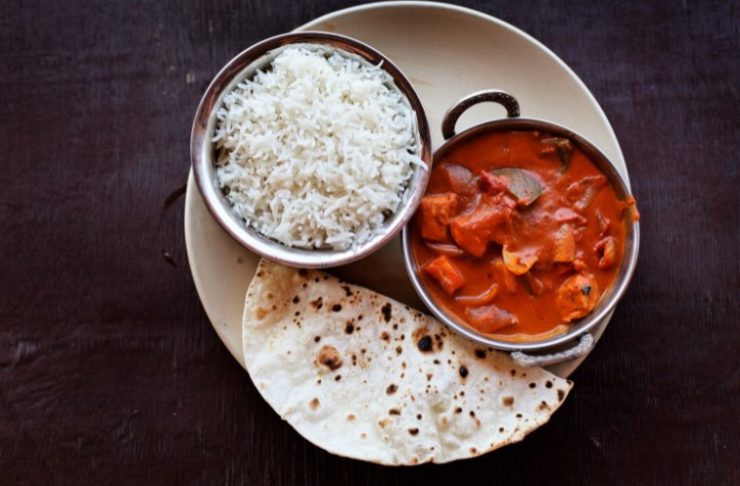
This is another great option that doesn’t require you to add additional ingredients or alter the flavor of the recipe. Serving spicy food over something a little more bland is basically another way of diluting the spiciness of the dish.
If it’s a spicy Asian dish, the obvious choice is rice, but you could also go with a stir-fried noodle or tofu. Spicy chili is great served over a baked sweet potato, which doubles the cooling power with the potato’s natural sweetness.
Adding starch to the meal also adds a lot of bulk. So, people can eat less of the overly spicy food, but still, feel plenty full at the end of the meal.
6. Serve A Cooling Beverage
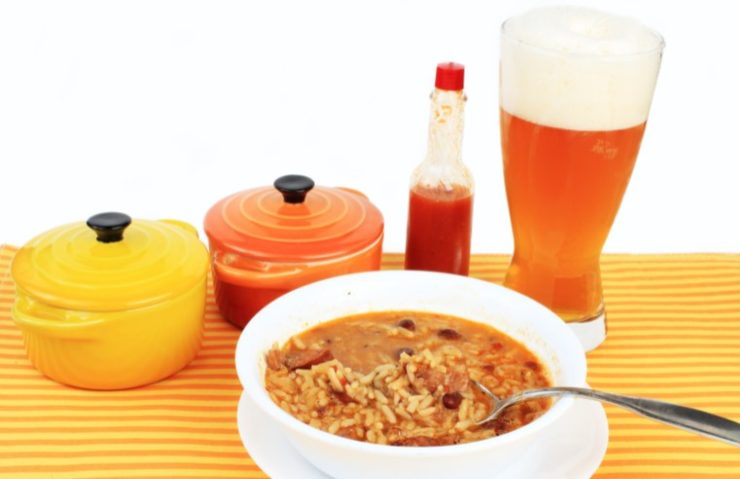
This option is for those who like the heat but might need a little reprieve from time to time. Serving a sweet or dairy-based drink to go with your spicy meal will allow diners to get the thrill of a mouth on fire, with a lifeline that will help them get through the meal.
Using a drink as a solution takes advantage of sweetness or dairy’s ability to counteract heat. All without affecting or changing the flavor of the spicy dish. And, it can be a fun addition to the meal as a whole.
Sweet drink options are endless, with juices, sodas, and teas that don’t require much additional effort. Or, you can make things a little more interesting with a high-acid wine, a milkshake, or maybe a yogurt lassi to go with your spicy vindaloo.
When Some Like It Hot And Others Do Not
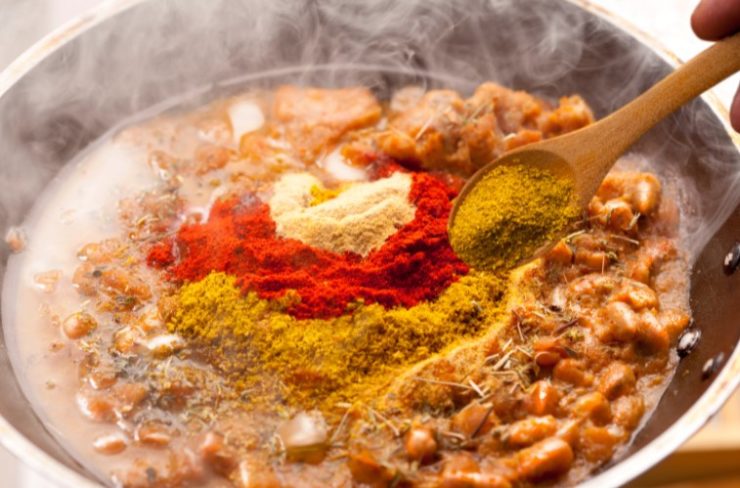
It would be great if everyone in your house had the same tastes and same heat tolerance. Alas, this is rarely the case. Something I’ve been forced to navigate now that a child has become a regular at the dining room table.
I admit that my spicy food intake has decreased dramatically, while my hot sauce intake has skyrocketed. But there are some spicy dishes that I refuse to give up.
Instead of making two separate recipes every time, one hot and one not, simply add your spicy elements towards the end of the cooking process.
That gives you the opportunity to remove a portion or two before you add your hot peppers, chili oil, or hot sauce to the mix.
Another option is to keep things on the mild side and use optional toppings to spice things up. And instead of dousing everything with tabasco or sriracha (there’s a time and place), explore the endless variety of hot sauces and spicy condiments used in cuisines around the world.
Keeping Things Balanced

Whatever route you take, it’s important to use restraint in whatever additions you’re making to tone down the heat. This is especially true if you’re adding anything that maybe doesn’t “belong” in the dish.
Cooking is all about balancing flavors, and the number one way to make a dish that you want to eat, taste it. Not at the end, when everything is done cooking. But throughout the entire cooking process, you can make adjustments before it’s too late.
Frequently Asked Questions
How Can You Tone Down Spicy Soup?
The easiest way to tone down spicy soup is to dilute it by adding more liquid or other ingredients. You can also try adding a dairy element like yogurt, sour cream, or cheese to mellow out the heat.
My Curry Is Too Spicy – How Do I Fix It?
Coconut milk goes well with a wide variety of curries and adding it will bring down the heat a notch or two. Serving curry over a simple starch like rice can also help make things a little milder.
How Should I Make Sauce Less Spicy?
Adding sweetness to a sauce is a good way to balance out too much spice. Depending on the other flavors in the dish, you could add a small amount of sugar, honey, or maple syrup to tone things down.
